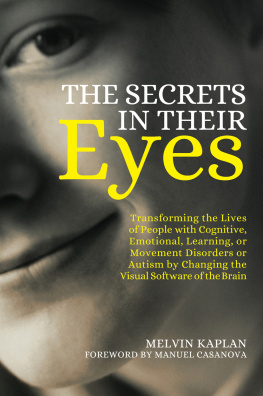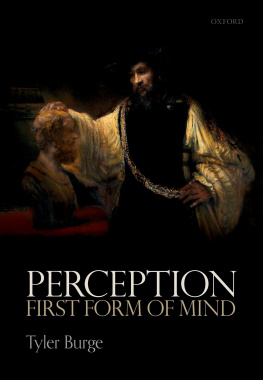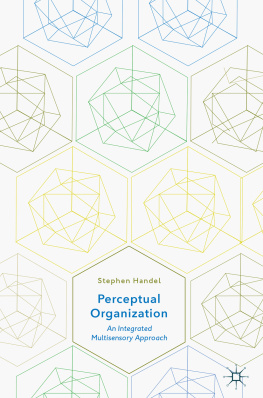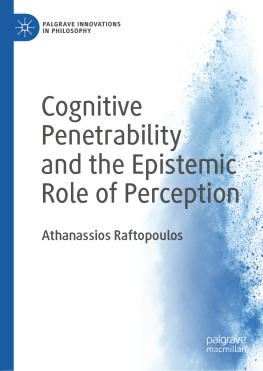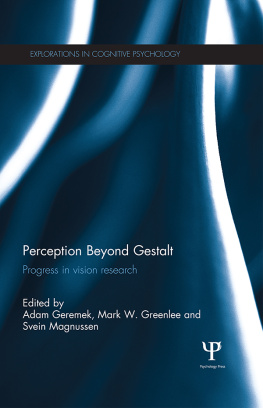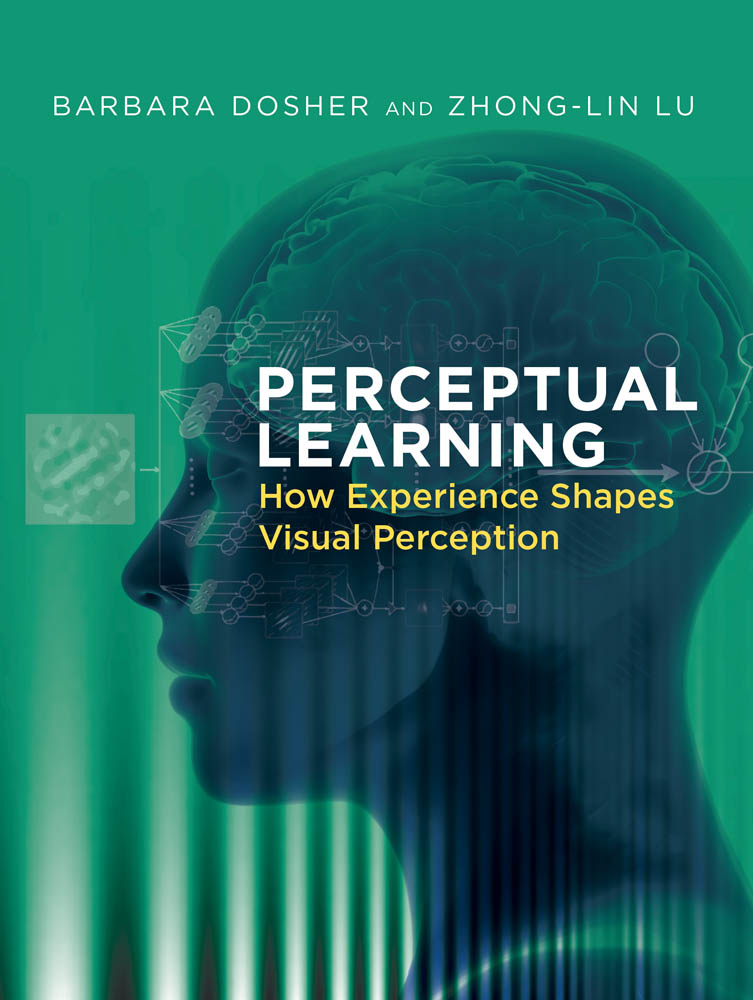Contents
Guide
Pagebreaks of the print version
Perceptual Learning
How Experience Shapes Visual Perception
Barbara Dosher and Zhong-Lin Lu
The MIT Press
Cambridge, Massachusetts
London, England
2020 Massachusetts Institute of Technology
All rights reserved. No part of this book may be reproduced in any form by any electronic or mechanical means (including photocopying, recording, or information storage and retrieval) without permission in writing from the publisher.
Library of Congress Cataloging-in-Publication Data
Names: Dosher, Barbara, 1951 author. | Lu, Zhong-Lin, author.
Title: Perceptual learning : how experience shapes visual perception / Barbara Dosher and Zhong-Lin Lu.
Description: Cambridge, Massachusetts : The MIT Press, [2020] | Includes bibliographical references and index.
Identifiers: LCCN 2020000423 | ISBN 9780262044561 (hardcover)
Subjects: LCSH: Perceptual learning.
Classification: LCC LB1067 .D67 2020 | DDC 370.15/5dc23
LC record available at https:// lccn .loc .gov /2020000423
d_r0
Science is beautiful when it makes simple explanations of phenomena or connections between different observations.
Stephen Hawking
All models are wrong, but some are useful.
George Box
Contents
- List of Figures
- (#1240544). (See plate 1.)
- Simulated examples of perceptual learning measured as increases in (a) percentage correct, (b) discriminability, (c) decreases in contrast threshold, or (d) threshold differences over blocks of training or practice.
- This diagram of an artificial neural network shows the nodes (units representing the stimuli or the output responses) and lines (connections), each with a different weight, that pass activation from the input layer to the hidden layer and then to the output layer. Such networks may include additional hidden layers.
- Performance depends on the signal-to-noise ratiothe responses to two different stimuli are noisy, which limits discrimination. (a) Histograms of responses from two distributions ( n= 10,000), with means and standard deviations of (0, 2.5) for light symbols and (4, 5) for dark symbols, and samples of each stimulus on each of 250 trials. The proportion correct is for a two-alternative forced-choice task, which depends critically on the noise. Histograms and samples show reduced noise variability and/or increased the signal mean, with (b) means and standard deviations of (0, 2.5) for light symbols and (5, 5) for dark symbols; (c) means and standard deviations of (0, 2) for light symbols and (4, 3) for dark symbols; and (d) for both increased signal and decreased noise variability, with means and standard deviations of (0, 2) for light symbols and (5, 3) for dark symbols. All three changes, in decreased variance, increased signal mean, or both, increased the signal mean and decreased the variance, improving performance.
- Diagram of the connected network of visual brain areas, based on monkey physiology. After Van Essen, Anderson, and Felleman, 99 figure 2, with permission. (See plate 2.)
- A schematic shows perceptual learning through reweighting of evidence from stable early representations to decision. Learning alters connections between stable early sensory representations to decision from an initial state (top) to a later state (bottom) in training. A stimulus image (top center) is processed and represented by units sensitive to spatial frequency and orientation, shown as filters and a filtered image, followed by nonlinearity and processing noises. After Dosher and Lu, 27 figure 3, and Dosher and Lu, 106 figure 11.
- Perceptual learning can reflect learned retuning of low-level representations or reweighting of selected preexisting lower-level representations or creation of higher-level units that represent new combinations of features. Learning of low-level visual tasks generally reflects selection, while learning of higher-level visual tasks reflects learning by creating or recruiting new representation units. This schematic illustration includes preexisting representations of orientation, texture, and color, and created units representing combinations.


